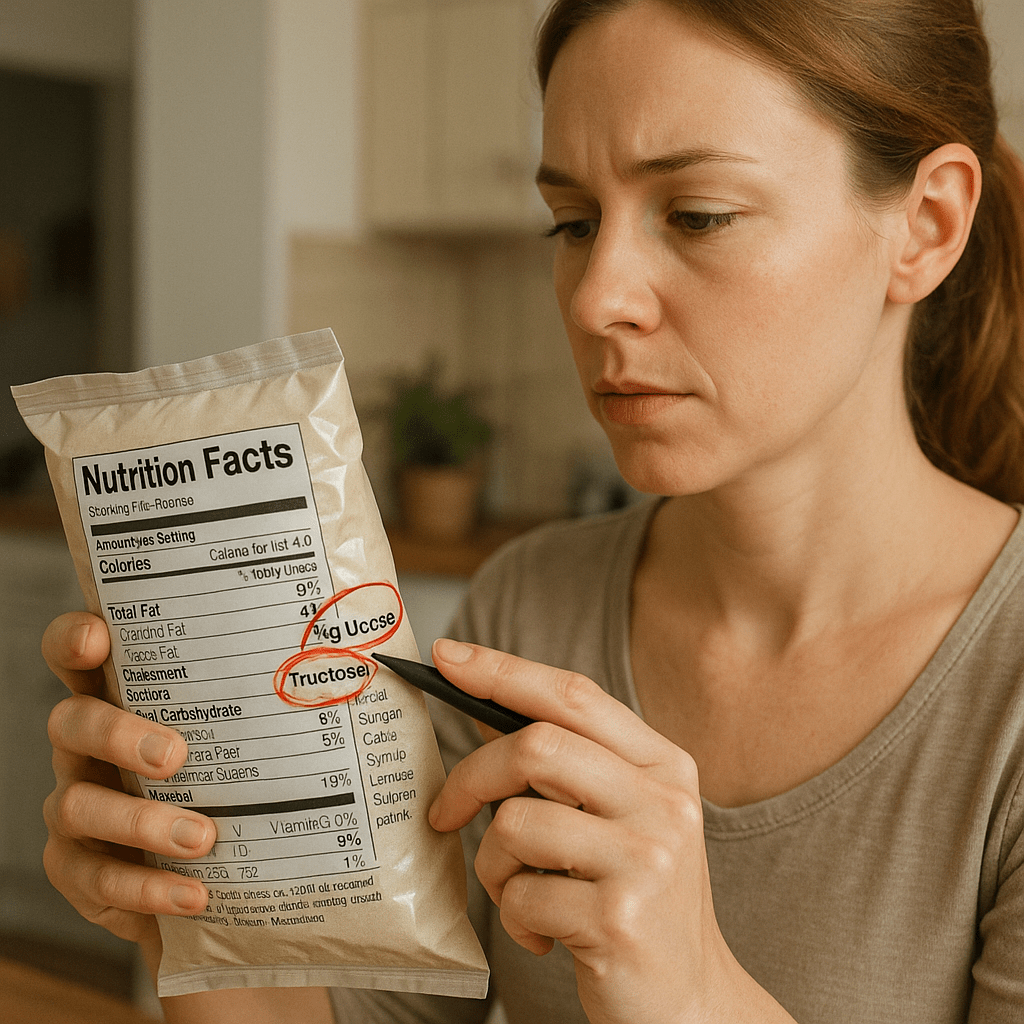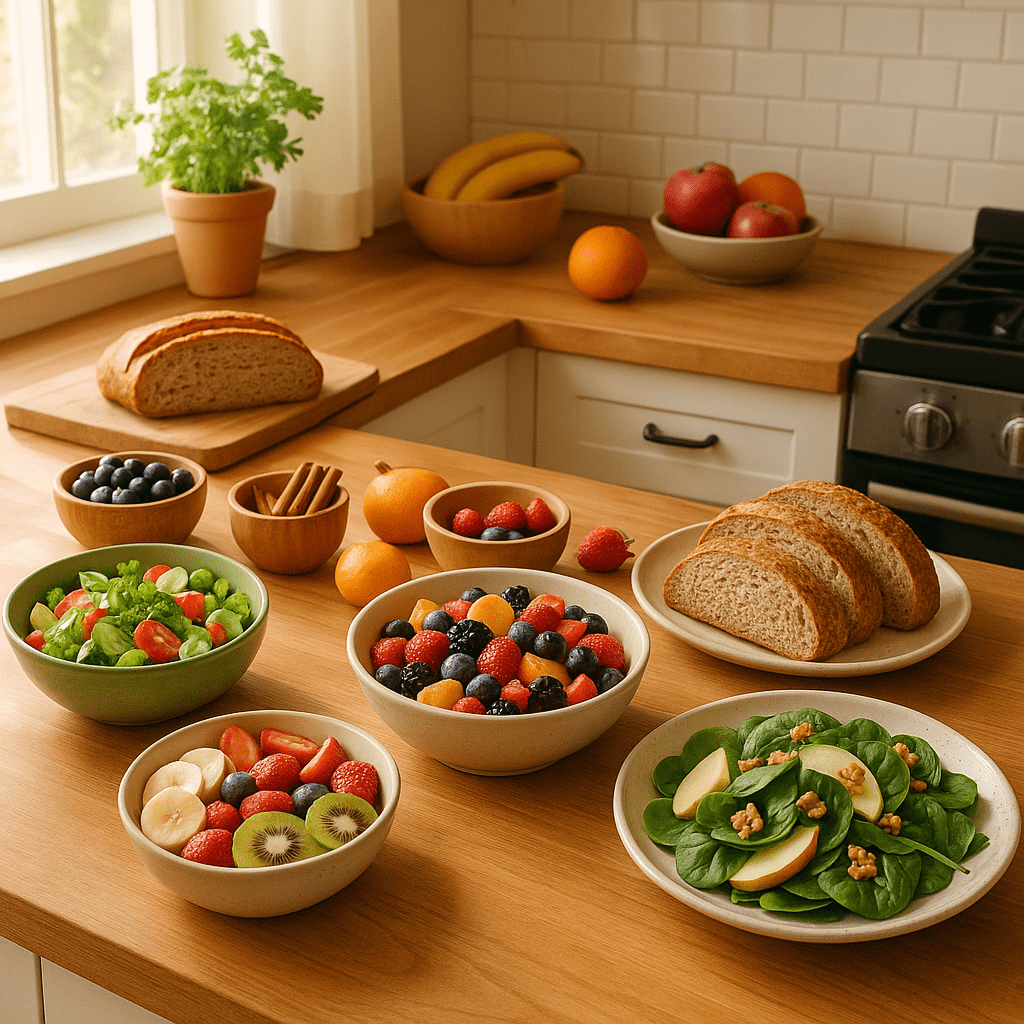In today’s world, grocery shelves are full of tempting, delicious, but often imperceptibly high-sugar products. Added sugar has become one of the biggest problems in modern nutrition, negatively affecting our health. Although the body is able to process a certain amount of natural sugar, excessive consumption of added sugar can lead to serious health problems – from weight gain to diabetes or heart disease. To ensure good health and well-being in the long term, it is important not only to reduce the amount of sugar consumed, but also to strengthen the body as a whole, for example, by combining the reduction of added sugar with immune supplements, which can improve overall well-being.
In this article, you will learn what exactly added sugar is, how it differs from natural sugar, what harm it can cause to your body and, most importantly, practical recommendations on how to reduce its consumption in everyday life.
Added sugar: definitions and types
Added sugar is sugar and syrups that are added to foods during their production or preparation. Unlike natural sugars, which are found naturally in fruits, vegetables, and milk, added sugars have no nutritional value other than calories.
The World Health Organization (WHO) recommends that added sugars should make up no more than 10% of your daily calories, and ideally less than 5%. For women, this would be about 25 g (6 teaspoons) per day, and for men, about 36 g (9 teaspoons) per day.
It’s important to understand that natural sugars, found in fruits and vegetables, are completely different from added sugars. Natural sugars come with fiber, vitamins, minerals, and antioxidants that help your body process the sugar more efficiently. Added sugars, on the other hand, only provide “empty” calories with no nutritional value.
Common Forms of Added Sugar in Foods
Added sugar can be found in many everyday products, even in places you might not expect it:

- Beverages: carbonated drinks, juices, sports drinks, flavored waters
- Breakfast cereal products: cereals, bars, cereal mixes
- Dressings: ketchup, barbecue sauce, salad dressings
- Canned products: canned fruit, canned vegetables
- Yogurt and dairy products: fruit yogurts, cottage cheese desserts, ice cream mixes
- Baked products: cookies, cakes, breads
Maintaining a healthy gut microbiome can help reduce cravings for sweets and better control sugar intake. One way to improve gut health is to take probiotics, such as KIKI Health Probiotics, Good Bacteria, which can be a great addition to a lower-sugar diet.
Health effects of added sugar
Regular consumption of large amounts of added sugar can cause various health problems. Research shows a clear link between excessive consumption of sweets and the following health problems:
- Weight gain and obesity: Added sugar is high in calories but low in satiety, making it easy to consume too many calories without feeling full
- Metabolic disorders: Regular sugar consumption can lead to insulin resistance, increased fat storage, and the risk of metabolic syndrome
- Diabetes: Excessive sugar intake can gradually damage the pancreas and increase the risk of type 2 diabetes
- Cardiovascular disease: Studies show that people with a diet high in added sugar have a higher risk of heart disease, even if they are not obese
- Mental health problems: Some studies link high sugar consumption to a higher risk of depression and anxiety
- Skin aging: Added sugar can accelerate the breakdown of collagen, which leads to premature skin aging and wrinkles
- Dental problems: Sugar is a major factor in the development of tooth decay
Lithuanian University of Health Sciences, Department of Public Health Faculty specialists emphasize that Lithuanian adults consume on average about twice as much added sugar as recommended by the WHO. This is alarming, especially considering that consumption rates among children and adolescents are even higher.
Practical Strategies for Identifying and Avoiding Added Sugar
Reducing your added sugar intake may be easier than you think. Here are some practical tips to help you identify and avoid hidden sugar in your daily diet.
How to Read Food Labels
Added sugar can be listed under a variety of names on food labels.

Look out for these ingredients:
- Sucrose, glucose, fructose, lactose, maltose
- Invert sugar, cane sugar, brown sugar
- Honey, agave syrup, corn syrup, maple syrup
- Fruit concentrate, dried juice
- Dextrose, maltodextrin
Newer food labelling standards often list added sugars under a separate line under “of which sugars”. However, you should still pay attention to the ingredient list as sugars can be listed under different names.
Tips for reducing sugar at home and when shopping
Here are some practical tips to reduce added sugar consumption in everyday situations:

- Plan your shopping: Make a shopping list in advance and stick to it to avoid impulse purchases
- Shop when you are full: A hungry person is more likely to buy sugary and processed foods
- Choose unprocessed foods: The less processed a product is, the less likely it is to contain added sugar
- Cook at home: When you cook, you control the quality and quantity of ingredients
- Gradually reduce sugar: If you are used to a sweet taste, reduce the amount of sugar gradually
- Use spices: Cinnamon, vanilla, cardamom provide natural sweetness without added sugar
Hidden sugar in supposedly healthy foods
Often foods advertised as “healthy” contain large amounts of added sugar:
- Fruit yogurts: Can contain up to 6 teaspoons of sugar per container
- Granola mixes: Often contain a lot of honey or other sweeteners
- Healthy bars: Although advertised as source of protein, many of which are high in added sugar
- Juice: Even 100% fruit juice is high in natural sugar but devoid of fiber, so it’s better to choose fruit
- Dresses and dressings: Ketchup, salad dressings, and marinades often contain a lot of added sugar
In addition to proper nutrition, gut health is also important in combating sugar cravings. Natural digestive supplements can be helpful in improving nutrient absorption and reducing the desire to eat sweets.
Sugar Alternatives
If you want to cut back on sugar but don’t want to give up sweetness, you can try these alternatives:
- Stevia: A natural, zero-calorie sweetener that’s much sweeter than sugar
- Erythritol: A sugar alcohol with almost zero calories
- Coconut sugar: Has a slightly lower glycemic index than regular sugar
- Single fruit pieces: Adds natural sweetness to desserts and baked goods
- Cinnamon: Spices like cinnamon can help reduce the need for added sugar
However, remember that any alternatives should be used in moderation, as the goal is to reduce your cravings for sweets in general, not simply replace one sweetener with another.
Differences between natural and added sugar
Many people don’t distinguish between natural and added sugar, but their effects on the body can be very different. The main differences lie not only in the origin of sugar, but also in the context of its consumption.
Metabolic Differences
Natural sugars found in fruits, vegetables, or dairy products are metabolized differently than added sugars.

Fruits and vegetables are high in fiber, which slows down the absorption of sugar and prevents a spike in blood sugar levels. In addition, the vitamins, minerals, and antioxidants in these foods help the body process sugar more efficiently.
In contrast, added sugar is quickly absorbed into the bloodstream, causing a spike in blood sugar levels and insulin release. Over time, this can lead to insulin resistance and type 2 diabetes.
Feeling full
Eating fruits or vegetables with natural sugars helps create a feeling of fullness. This means it’s harder to overeat. Meanwhile, foods with added sugars often don’t provide a long-lasting feeling of fullness, making it easy to consume too many calories.
Studies show that people who eat an apple feel fuller than those who drink apple juice with the same amount of calories. This confirms that natural sugars in whole foods affect the body differently than refined added sugars.
Getting used to less sweetness
Cutting back on added sugar can be a challenge, especially if you’re used to intense sweetness. However, your taste buds can adjust over a few weeks. Start by gradually reducing the amount of sugar in your coffee, tea, or homemade meals. Over time, you’ll find that the sweet foods you used to enjoy now seem too sweet.
It’s important to note that some natural compounds may help regulate glucose metabolism in the body. For example, berberine may help lower blood sugar levels and help control insulin release, which may be a useful strategy for managing sugar intake.
Here’s a comparison of the effects of natural and added sugars:
- Energy: Natural sugars provide long-lasting energy due to their slower absorption, while added sugars cause a short-term energy spike, often followed by fatigue
- Satiety: Foods with natural sugars tend to contain fiber, protein, and other nutrients that help you feel fuller for longer, while products with added sugars rarely provide long-term satiety
- Nutritional value: Natural sugars are usually found in foods that contain vitamins, minerals, and other nutrients, while added sugars generally have no nutritional value other than calories
Conclusion
Added sugar is one of the biggest challenges in modern nutrition, hidden in many products in our daily diet. While it is neither necessary nor realistic to completely eliminate sugar, it is important to learn to recognize hidden sugar on labels and make conscious choices about what we eat.
A healthier diet starts with knowledge and understanding. Start small – read labels, choose less processed foods, cook your own food and gradually reduce the amount of sugar in your diet. Over time, you will notice that your taste buds will adapt and your cravings for sweets will decrease.
In order to achieve better health, it is worth not only reducing your added sugar intake, but also considering the overall quality of your diet, your level of physical activity and, if necessary, consulting with health professionals for individual nutritional recommendations or appropriate supplements.
Remember – the goal is not to completely eliminate sweetness from your life, but to find a healthier balance that allows you to enjoy food and maintain good health in the long term.
Frequently Asked Questions
What is added sugar and how is it different from naturally occurring sugar?
Added sugar is any sugar or syrup added during the manufacturing or preparation of food, while naturally occurring sugar is found naturally in unprocessed foods, such as fruit or milk.
How can you easily spot added sugar on food labels?
Look for ingredients that end in “-ose” (glucose, fructose), the word “syrup” or sweeteners listed in the first few items of the ingredient list.
What are the main health risks associated with excessive added sugar consumption?
Increased risk of obesity, type 2 diabetes, cardiovascular disease, dental decay and possibly mental health disorders.
What are the recommended daily allowances for added sugar?
The WHO and health authorities recommend that added sugars make up less than 10% of daily calories – ideally less than 25g for women and 36g for men.
Are natural sweeteners a healthy alternative to added sugar?
Natural sweeteners (such as stevia or monk fruit) can help reduce sugar intake, but it is important to use them in moderation and read ingredient lists for hidden sugars.

